 Abraham Lincoln
If given the truth, the people can be depended upon to meet any national crisis...
Abraham Lincoln
If given the truth, the people can be depended upon to meet any national crisis...
 Guildford news...
for Guildford people, brought to you by Guildford reporters - Guildford's own news service
Guildford news...
for Guildford people, brought to you by Guildford reporters - Guildford's own news service
Remembering Guildford’s First World War Military War Hospitals
Published on: 4 Nov, 2018
Updated on: 7 Nov, 2018
With remembrance services and events this coming weekend and the focus of course being on the centenary of the Armistice, local historian and writer DAVID ROSE, looks at medical care for servicemen in Guildford during the First World War.
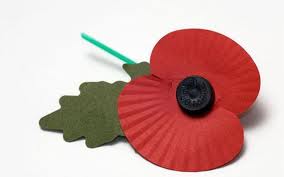 Guildford was one of many towns throughout Britain that provided an astonishing range of medical care to servicemen during the Great War.
Guildford was one of many towns throughout Britain that provided an astonishing range of medical care to servicemen during the Great War.
These included the Royal Surrey County Hospital and at the County School for Girls, both in Farnham Road, the Guildford Union Workhouse in Warren Road, and at a number of country homes.
Instrumental in assisting with the transfer of wounded men and the staffing of these hospitals and places of care were a number of local organisations, that included the Guildford Division of the Red Cross Society and its Voluntary Aid Detachments (VAD) and Guildford’s St John Ambulance Brigade.
At the outbreak of war in 1914, the management of the Royal Surrey County Hospital in Farnham Road made provision for its Edward ward and an adjoining closed balcony to be used by the War Office.
The hospital received its first military patients on October 15 1914, who arrived at Guildford railway station. The St John horse-coach and the workhouse ambulance conveyed the wounded men the short distance to the hospital where a number of local doctors were present waiting to give initial treatment.
This procedure was repeated many times and up until the end of 1917 with more than 550 servicemen treated at the hospital. For every bed occupied the War Office paid the hospital three shillings per day towards the cost of treatment, food and nursing. From March 1918, until the ward reverted back to normal use, it was used for the treatment of discharged servicemen.
St John ambulance volunteers sat with patients who required constant sympathetic attention; although for some younger volunteers the experience was often harrowing. By 1917, only members over the age of 30 were considered for night duty at the Royal Surrey County Hospital.
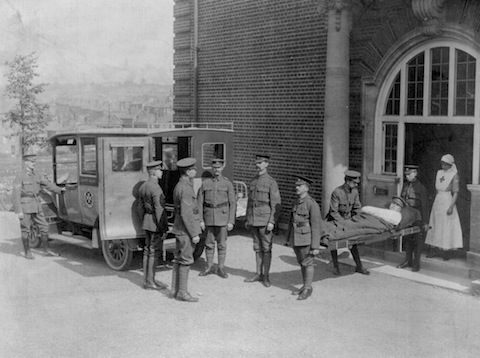
St John Ambulancemen with patients at the Red Cross Annexe, the commandeered County School for Girls in Farnham Road.
Opposite the Royal Surrey County Hospital was the then newly built County School for Girls. At the outbreak of war it had not yet been occupied, and straight away the Guildford Education Committee offered it as a war hospital. This was accepted and the Guildford Division of the Red Cross Society agreed to equip and staff the building. An appeal was made for volunteer nurses, clerical staff and others to undertaking the catering and laundry. Offers flooded in along with gifts of small items of furniture and linen.
Working in conjunction with the adjacent Royal Surrey County Hospital, the Red Cross Annexe as it became known accepted its first military patients on January 12 1915, a number of whom were suffering from frost-bite.
The annexe’s commandant was Lady Rowley, the vice-president of the Guildford Division of the Red Cross Society.
She worked tirelessly in her role for the duration of war, despite suffering ill health and the loss of two sons – Second Lieutenant C. R. Rowley, of the Lancashire Fusiliers, who died in France on July 10 1916; and Lieutenant R. F. Rowley, Royal Field Artillery, who was killed in France on March 21 1918. After the war she was made an OBE.
The hospital closed at the end of 1918, by which time it had received 2,730 patients. While it was in use as a war hospital, the pupils who had intended to go to school there had their lessons in various large houses in Guildford.
Also displaced for a large part of the war were inmates of the Guildford Union Workhouse in Warren Road. In November 1915 the local press reported that the military authorities were planning to take over the whole of the workhouse and the Board of Guardians was considering how to house the inmates elsewhere. Its 92 infirmary patients, 163 adult and 28 children pauper inmates were transferred to neighbouring workhouses including Hambledon near Godalming, Farnham and Epsom.
Under the supervision of temporary Lieutenant-Colonel Herbert Powell, Royal Army Medical Corps (RAMC), the Guildford Military War Hospital, as it was named, opened in March 1916. Doctors from Guildford initially formed the medical staff.
A RAMC surgeon and women doctors took over later. It was the largest of Guildford’s wartime military hospitals that opened with 300 beds, later increasing to 480 beds. Eighty nurses attended to the patients supported by a number of orderlies and clerks, including existing workhouse staff, who retained their civilian status.
On July 15 1916 the Surrey Advertiser reported: “A further contingent of wounded soldiers reached Guildford on Saturday. Twenty were taken to the Surrey County Hospital and over 80 to the new War Hospital in Warren Road, which is now the central hospital for Guildford and district. The soldiers’ injuries were pretty severe, none being able to walk.”
From the early part of 1918 the Guildford Military War Hospital was mostly used to treat cases of malaria, and closed in May 1919, having treated 7,680 patients, among those being a number of Australian servicemen.
Lieutenant-Colonel Powell lived at Piccards Rough in St Catherine’s Village. In 1915 he and his wife Beatrice gave their home over for the use as an auxiliary hospital. At the outbreak of the war Mrs Powell had been appointed commandant of a new VAD of the Guildford Division of the Red Cross.
The War Office accepted the offer by the Powells of their home as a Red Cross hospital. The first patients arrived on April 11 1915, and a little too soon for Mrs Powell, as she noted: “The telephone rang, and orders came through that we must expect thirty men that evening. I was in despair, Sunday of all days, and very little food in the house and no VADs. I implored the man at the other end of the telephone to let us off till the next day, but of course he couldn’t, and it came to me as a shock to realise the inevitability of the whole thing – what it meant to be part of the military machine.”
Those soldiers who made good progress in their recovery at Piccards Rough and were able to walk often made trips to Guildford and back. Mrs Powell recalled: “Everything possible was done for the ‘Tommy’ to make life a little less hideous (for there was generally the prospect of a return to soldiering) and in the process he was rather spoilt. A bevy of those we had, used to come back to an enormous tea at five saying they had been given already five separate teas, by various kind but misguided ladies who lay in wait for the men in blue!”
The Earl and the Countess of Onslow’s home at Clandon Park was also converted into a war hospital for injured troops arriving directly from the battlefield. It had a total of 132 beds and admitted 5,059 soldiers. Lord Onslow’s dressing room with its running water and strong northeast light was chosen as an operating theatre, where 747 operations were performed.
The hospital received its patients from Clandon railway station. Not only did the Guildford Division of St John Ambulance assist with the detraining of the wounded but two military ambulances with soldier drivers were used, under the supervision of Lady Onslow, who was the hospital’s commandant. The hospital staff included trained nurses, VADs nurses and orderlies from St John Ambulance and the Shere and Albury detachment of the Red Cross.
The first patients were a convoy of badly wounded Belgians who arrived at Clandon railway station at three o’clock in the morning of October 14 1914. The hospital was kept busy until April 1919, and had two annexes – a house called Heywood in Cobham, and Broom House at West Horsley.
Under the command of Divisional Superintendent, Martin Williamson, members of the Guildford Division of St John Ambulance Brigade undertook a wide range of duties throughout the war.
As their needs changed, injured soldiers who had been returned to Britain were constantly being moved from one hospital or institution to another. Staff of the Guildford division assisted in transferring men from ambulance trains to local hospitals throughout Surrey and sometimes beyond.
The brigade’s horse-drawn ambulance was supplemented by a Napier motor-ambulance, while offers from those who owned motor-cars to help transport the injured, were also taken up.
Some worked as volunteer orderlies in hospitals, while at the Guildford Military War Hospital in Warren Road and at Clandon Park Military Hospital they stood in for permanent orderlies at weekends. Others volunteered for night porter work, while all ranks acted as operating theatre orderlies at Thorncombe Hospital in Bramley.
The division’s Sergeant Major James Lambert, who worked extensively at Clandon Park Hospital, was presented with an autograph book by Belgian soldiers. It is clear evidence of the efforts he made to make their stay more comfortable.

Guildford St John Ambulance volunteers pictured at what is believed to be the Red Cross Annexe. They are wearing uniforms that they bought themselves, preferring to wear khaki rather than their civilian dark blue uniforms.
Many members also enlisted in the Military Home Hospitals Reserve. Working under the control of the Royal Army Medical Corps (RAMC) they took up orderly duties at hospitals across southern England. Members also served with the RAMC abroad at hospitals in France, Egypt, Macedonia, Mesopotamia and India.
Nearly 100 of the 170-strong Guildford division joined the forces, seven of those losing their lives.
This story is reproduced from David Rose’s book Great War Britain Guildford Remembering 1914-18, published by The History Press in 2014, with additional details and pictures.
Thanks to The Spike Heritage Centre for additional information and pictures from its collection. The Spike was the casual ward of the former Guildford Union Workhouse. It is open for tours on Tuesdays and Saturday, with group bookings on other days also available. The tour includes an exhibition, From A Workhouse Infirmary to an NHS Hospital, which has more information about the Guildford Military War Hospital.
Recent Articles
- Notice: Rosamund Community Garden
- Village School Set to Close Due to Falling Birth Rate
- Letter: Waverley’s Management of CIL Money Is Morally Questionable
- Dragon Interview: MP Hopes Thames Water Fine Will Be ‘Final Nail in Its Coffin’
- Conservative Claims on Use of CIL Payments ‘Political Theatre’ Say Lib Dems
- Thames Water Faces £122 Million Penalty Following Ofwat Inquiry
- New Knife Crime Strategy for Surrey Announced
- Public Asked for Views on SCC’s Proposal for Reduced Speed Limits
- Guildford Healthcare Staff Celebrated for Transformative Mental Health Support
- Will the Government Help Save Community Pubs? Asks Surrey MP


Search in Site
Media Gallery
Dragon Interview: Local Artist Leaves Her Mark At One of England’s Most Historic Buildings
January 21, 2023 / No Comment / Read MoreDragon Interview: Lib Dem Planning Chair: ‘Current Policy Doesn’t Work for Local People’
January 19, 2023 / No Comment / Read MoreA3 Tunnel in Guildford ‘Necessary’ for New Homes, Says Guildford’s MP
January 10, 2023 / No Comment / Read More‘Madness’ for London Road Scheme to Go Ahead Against ‘Huge Opposition’, Says SCC Leader
January 6, 2023 / No Comment / Read MoreCouncillor’s Son Starts Campaign for More Consultation on North Street Plan
December 30, 2022 / No Comment / Read MoreCounty Council Climbs Down Over London Road Works – Further ‘Engagement’ Period Announced
December 14, 2022 / No Comment / Read MoreDragon Interview: GBC Reaction to the Government’s Expected Decision to Relax Housing Targets
December 7, 2022 / No Comment / Read MoreHow Can Our Town Centre Businesses Recover? Watch the Shop Front Debate
May 18, 2020 / No Comment / Read More



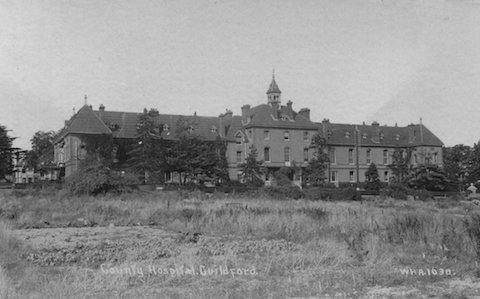

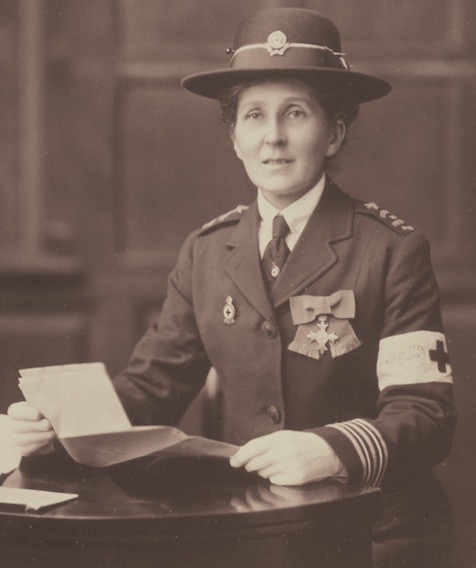



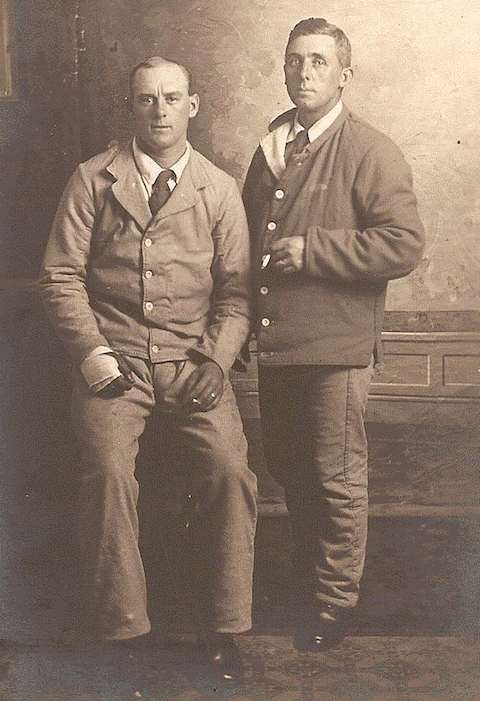
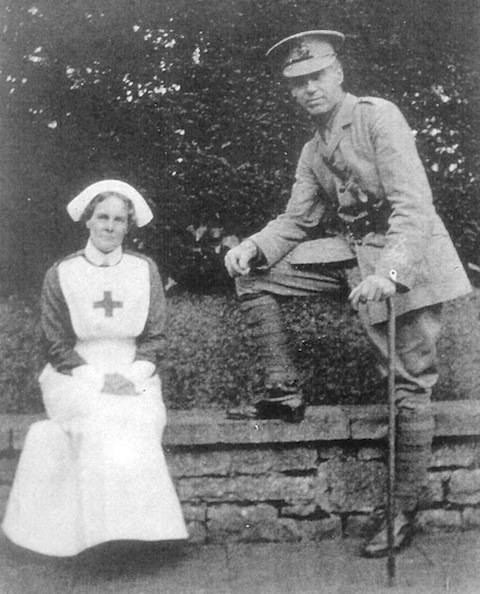

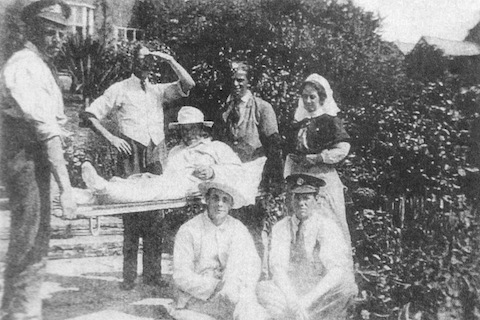

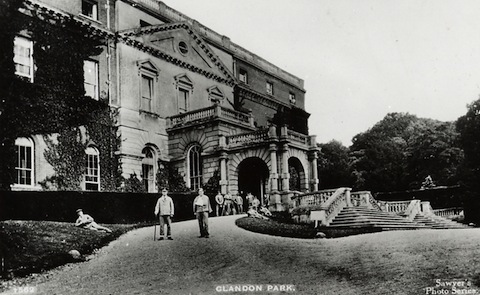
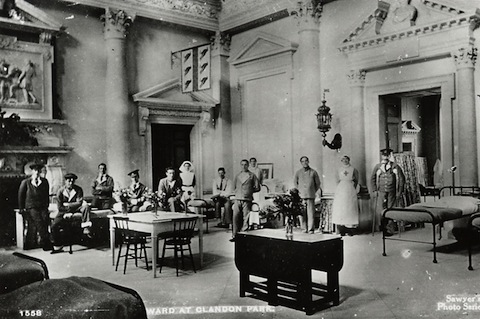
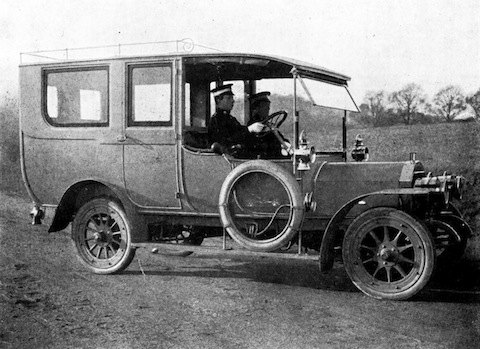







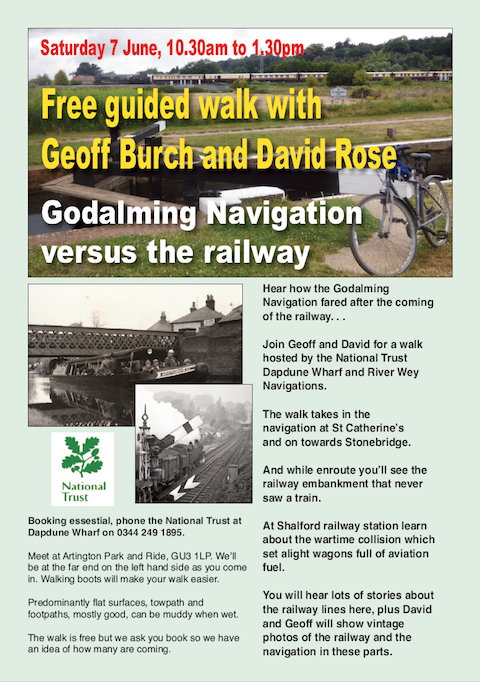


Recent Comments